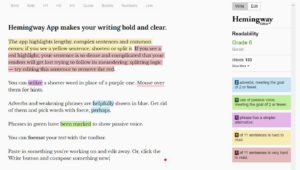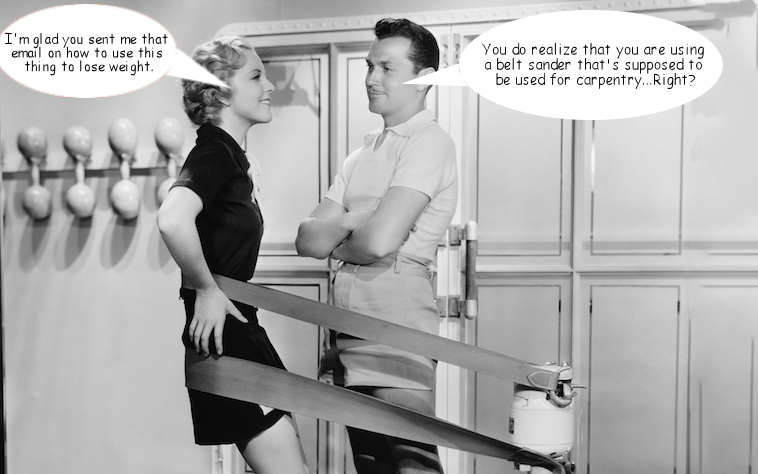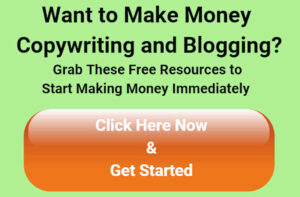If you’re a fitness trainer and ignoring email marketing, you might as well give up.
I realize this is a rather bold statement, but it’s vital to your business.
You must stay connected to your clients and prospects if you’re going to build a thriving business.
And email marketing is the perfect vehicle to do that.
In this post, we’re diving into the practices of email as they apply to a fitness trainer business.
So, coaches, here’s how to turn your practice into a revenue generating machine.
This should blow your mind…
1. How to Set Up Your Fitness Trainer’s Email Platform
The first step you’ll need to take is selecting and setting up an email marketing platform.
I understand that you’re a health and fitness trainer, not a digital marketing expert. So, let me explain what an email marketing platform is and what it does.
An email marketing platform (EMS) is an online tool that simplifies email marketing. It allows users to effortlessly create, send, and manage email campaigns.
To put it simply, with an EMS, you can send thousands of email messages to your subscribers all at once.
You write one message, add it to the email platform, and click the send button. Voilà! Your message goes out to everyone on your list.
As you use an email platform for your health and fitness business, you’ll discover additional tools:
(No need to worry if you’re unfamiliar with these tools; you’ll learn them with time.)
- A/B testing
- Analytics
- Word processor
- Segmentation
- Personalization
- Retargeting
- App Integrations
- Transactional replies
- Date automation
As mentioned earlier, don’t fret if these seem challenging now. They are straightforward to grasp, and with practice, you’ll become familiar with them.
Where to Find Email Services for Your Fitness Trainer Business
Now, where can you find these services?
Email marketing systems (EMSs) are readily available online. Here’s a list of the most popular ones:
- Mailchimp (My personal favorite)
- ConvertKit
- Constant Contact
- AWeber
- HubSpot
- GetResponse
- ActiveCampaign
- SendinBlue
- Campaign Monitor
- Drip
While I could delve into the specifics of each, your choice will ultimately come down to personal preference. (Exploring each in detail would also make for an extensive post.)
If you’re a health and fitness trainer unfamiliar with these online tools, I recommend visiting their websites for more information.
Additionally, YouTube offers a wealth of reviews and “how-to” videos to assist you in your research.
Take some time to explore them, but remember, they all offer similar functionalities.
Now, let’s proceed to your next task: Building Your Email List.
2. Build a Quality Email List to Attract Health and Fitness Trainer Prospects
As a Fitness trainer, your list is your most valuable asset. If you have a business of any kind, any prospect or customer list is gold.
(I have a story about this, and you can read it here: 100% Proof that the List is Paramount)
And the most valuable of your lists is the one of clients you have serviced in the past and who like you.
Yep, people you have already done business with and love how you helped them will be the easiest to sell to again.
So, building an email list that connects you to prospects and clients is like a bridge you can access at will.
But growing your email list with quality subscribers takes some finesse. You don’t want merely anyone to get onto your list, only people who will buy your services at some point.
Real World Example of Finding a Cash-Rich Market
Let me give you a real-world example of this.
There’s this famous marketer/copywriter named Dan Kennedy, and he had a client who was mad at him.
The client had a carpet cleaning business, and Dan taught him how to send sales letters to prospects.
“I wrote and sent out your sales letters to a thousand people, and nobody responded,” the man said.
Dan’s reputation was on the line, so he told the man to drive him around to the houses he sent the letters to.
The man took him to the neighborhoods where he sent the letters to, and guess what?
The houses had cars parked all over the lawns, roofs falling apart, doors left wide open, etc.
You know the deal.
Dan said, “No, no, no. You’re sending the letters to the wrong houses!”
He then told the man to drive through the upscale neighborhoods. The neighborhoods with manicured lawns, big cars, and massive boats in the driveways.
“Send the letters to addresses with homes like this,” Dan told him.
So, the man did, and he was flooded with orders and able to charge higher prices, too.
The moral of the story is:
Make sure your prospect list targets the kind of person(s) who will pay you for your services.
Everyone else is lookers and scoffers.
Here’s an early video by the famous fitness trainer/ entrepreneur Bedros Keuilian on how to use email marketing to grow your business.
You Need a Lead Magnet to Build Your Fitness Trainer List
The way lead magnets work is quite simple.
You create or hire someone to build a lead magnet for you. After completion, you offer people your lead magnet to those who visit your website.
Once on your fitness trainer website, you can entice your visitors with an irresistible offer. The offer is: I’ll give you my lead magnet if you’ll give me your email address.
Pretty simple, eh?
You can create all kinds of lead magnets and even bundle them together to make your offer more enticing.
(I actually know of one copywriter who gave away 67 free eBooks as a lead magnet offer.)
Here is a list of the types of lead magnets you can create:
-
Ebooks and Guides:
- Comprehensive guides on relevant topics.
- “How-to” fitness trainer eBooks.
- Industry-specific handbooks.
-
Checklists:
- Actionable checklists for specific tasks.
- “Cheat sheets” with quick reference information.
- Pre-event checklists.
-
Webinars and Workshops:
- Live or recorded webinars.
- Workshop sessions on expertise areas.
- Training seminars.
-
Templates and Worksheets:
- Fillable templates for common tasks.
- Worksheets to help with decision-making.
- Planners and calendars.
- Resource Lists:
- Curated lists of valuable resources.
- Recommended tools and software.
- Directory of helpful websites.
-
Video Tutorials:
- How-to video guides.
- Demonstrations and tutorials.
- Video courses or series.
-
Quizzes and Assessments:
- Self-assessment quizzes.
- Personality tests.
- Compatibility quizzes.
-
Challenges:
- Short-term or long-term challenges.
- 30-day fitness or diet challenges.
- Writing or creativity challenges.
-
Exclusive Access:
- Access to premium fitness trainer content or forums.
- VIP memberships.
- Early access to products or services.
-
Free Trials and Samples:
- Free trials of software or apps.
- Sample products or services.
- Limited access to premium features.
-
Toolkits and Resource Bundles:
- Bundles of relevant resources.
- “Starter kits” for beginners.
- Collections of templates, guides, and tools.
-
Infographics:
- Visual representations of data or information.
- Summaries of complex topics.
- Educational infographics.
-
Case Studies and Success Stories:
- Real-life examples of success.
- Case studies demonstrating results.
- Customer success stories.
-
Whitepapers and Research Reports:
- In-depth reports on industry trends.
- Research findings and analysis.
- Whitepapers on specific topics.
-
Challenges:
- Short-term or long-term challenges.
- 30-day fitness or diet challenges.
- Writing or creativity challenges.
-
Calculators and Tools:
- Online calculators for specific purposes.
- Interactive tools for assessments.
- Budgeting or planning tools.
-
Podcasts and Audio Content:
- Exclusive podcast episodes.
- Audio guides and meditations.
- Interviews with experts.
-
Expert Interviews:
- Interviews with industry experts.
- Q&A sessions with thought leaders.
- Panel discussions and expert roundtables.
-
Surveys and Polls:
- Access to survey results.
- Participation in future polls.
- Insights and statistics from surveys.
-
Mini-Courses:
- Short online courses on specific topics.
- Multi-day email courses.
- Crash courses for beginners.
-
Interactive Content:
- Interactive quizzes and games.
- PDFs that are interactive
- Interactive assessments or diagnostics.
-
Challenges:
- Short-term or long-term challenges.
- 30-day fitness or diet challenges.
- Writing or creativity challenges.
-
Free Consultations:
- Initial consultation sessions.
- Strategy calls.
- Free coaching sessions.
-
eBooks and Audiobooks:
- eBooks in different formats.
- Audiobook versions of written content.
- Exclusive chapters or excerpts.
-
Discount Codes and Coupons:
- Special discounts on products or services.
- Coupon codes for future purchases.
- Limited-time offers.
-
Exclusive Communities:
- Access to private forums or groups.
- Membership in exclusive communities.
- Networking opportunities.
-
Toolkit and Resource Lists:
- Collections of tools and resources.
- “Best of” lists in your industry.
- Essential resources for specific tasks.
-
Personalized Recommendations:
- Customized recommendations based on user preferences.
- Personalized shopping lists.
- Tailored advice.
-
Free Trials and Samples:
- Free trials of software or apps.
- Sample products or services.
- Limited access to premium features.
-
Sneak Peeks and Previews:
- Early access to upcoming content.
- Sneak peeks of products or services.
- Exclusive previews.
Idea Bank for Health and Fitness Coaching Lead Magnets
I’m sure your mind is aswirl with all kinds of ideas you can use to make your own lead magnet.
But if you’re having a problem coming up with ideas, here are some for health and fitness coaches that you can use:
Ebooks and Guides:
- “7-Day Healthy Meal Plan for Weight Loss”
- “Beginner’s Guide to Strength Training”
- “Ultimate Guide to Nutritional Supplements”
- “Mindful Eating Handbook: Tips for a Balanced Diet”
- “Quick and Easy Healthy Recipes Cookbook”
Checklists:
- “Pre-Workout and Post-Workout Checklist”
- “Grocery Shopping List for Clean Eating”
- “Daily Habit Checklist for a Healthy Lifestyle”
- “Injury Prevention Checklist for Exercise”
- “Travel Fitness Essentials Checklist”
Webinars and Workshops:
- “Live Webinar: Mastering Your Metabolism”
- “Workshop: Yoga for Stress Relief”
- “Nutrition Seminar: Superfoods for Optimal Health”
- “Fitness Q&A Session with a Health Coach”
- “Mindfulness Meditation Workshop”
Templates:
- “Weekly Workout Planner Template”
- “Healthy Meal Planning Template”
- “Fitness Progress Tracking Sheet”
- “Weight Loss Goal Setting Worksheet”
- “Recipe Card Template for Healthy Dishes”
Resource Lists:
- “Top 10 Fitness Trainer Apps for Home Workouts”
- “Recommended Reading List for Health Enthusiasts”
- “Essential Kitchen Tools for Healthy Cooking”
- “Fitness Equipment Guide for Home Gyms”
- “Online Communities and Forums for Health Support”
Video Tutorials:
- “Full-Body Workout Video for Beginners”
- “Healthy Cooking Demonstration: Meal Prep Tips”
- “Guided Meditation Session for Stress Relief”
- “Proper Form and Technique for Strength Training”
- “Yoga Flow for Relaxation”
Quizzes and Assessments:
- “Find Your Fitness Personality Quiz”
- “Nutrition Knowledge Assessment”
- “Stress and Wellness Self-Assessment”
- “Body Type Quiz: Discover Your Ideal Workouts”
- “Healthy Eating Habits Quiz”
Challenges:
- “30-Day Fitness Trainer Challenge: Get in Shape at Home”
- “Sugar Detox Challenge: Kickstart Your Health”
- “Hydration Challenge: Drink More Water”
- “Mindful Eating Challenge for Weight Loss”
- “Daily Step Count Challenge for Active Living”
Exclusive Access:
- “Access to a Private Facebook Group for Health Tips”
- “VIP Discounts and Special Offers on Coaching Services”
- “Early Access to New Health and Fitness Content”
- “Members-Only Webinars and Live Q&A Sessions”
- “Free Trial for Premium Fitness App or Program”
Lead magnets are not only used for building your email list; you can also use them to build relationships with your followers.
They can help your prospects and clients connect with you and seek your coaching services.
So, in a nutshell, they are great for building your health and fitness coaching business.
3. Use the Power of Segmentation
Not everyone on your email list is the same. You don’t want to send the same message to everyone, so you need to use segmentation.
What is segmentation?
It is the art of dividing your email list into smaller groups.
These groups can be based on specific criteria.
Every good email platform (e.g., MailChimp, Constant Contact, AWeber, etc.) has tools you can use to segment your email messages. If they don’t, you should use a different one.
Here are a few reasons why segmentation is so important:
Relevance
By segmenting your list, you can tailor your messages to be specific to different groups.
If you address specific interests, needs, or preferences, you will engage your readers. Unengaged readers are those who usually ignore and unsubscribe from your list.
A good example of this would be if you have an email list based on freshwater fishing.
Some people are fly fishermen, and others are people who use lures. You can structure your email messages to each group by segmenting them.
Better Open Rates
Another benefit of using segmentation is higher open rates. If your readers see a subject line that speaks to their concerns, they will click on your message and read it.
This is one reason why segmenting and subject lines are vital to your email campaign.
Adlucent, a marketing agency, conducted research on this concept and discovered that 71% of consumers favored personalization.
Higher Conversions
Easier Tracking

4. How to Create Great Content for Your Readers
This is the meat of your email marketing.
Think of your email’s subject line as the headline of a captivating story. Just like catchy headlines in ads or intriguing blog post titles, a well-crafted subject line can determine whether your email gets opened and read or gets relegated to the digital trash bin.
It’s a brief line of text that your recipients glimpse as they browse through their email inbox. Given the time and effort you invest in crafting your email content, the last thing you’d want is for your readers to casually overlook it.
That’s why mastering this crucial element is a must. To drive the point home, here’s an example:
The Preheader: Your Secret Weapon in Sales Emails
Think of the preheader as your email’s sidekick, quietly waiting right next to the subject line. It gives a sneak peek into what’s inside your message.
Now, here’s the secret sauce: Many email copywriting pros vouch for the preheader’s importance.
When it’s crafted just right, the preheader teams up with the subject line to nudge your readers into opening your email. So, even if your subject line doesn’t pack a punch, the preheader can often seal the deal and get folks to dive into your sales pitch.
Quick tip: Remember, the subject line and the preheader are like a dynamic duo. They work best when they’re in sync. If your subject line talks about apples, your preheader shouldn’t be all about oranges.
It’s all about that sweet harmony!
Cracking the Code: Crafting Irresistible Subject Lines
Let me unveil the secret formula:
B + C = I
In simpler terms:
Benefits + Curiosity = Immediate Interest
Seems pretty straightforward, wouldn’t you agree?
I know that is a pretty easy formula, but here is another basic one you can use to write great subject lines:
Urgent + Unique + Ultra-specific + Useful = A great subject line
You don’t have to use all 4 of those U’s because the optimal length for a subject line is around 41 to 50 characters. So, if you try to fit them all into the subject line field, they won’t fit.
The important thing is that your subject line is clear, and it has relevance to your email message.
Now, let’s dissect a successful subject line to witness the magic in action!
Putting the 4 U’s Formula to the Test
Here is an email subject line we can take a look at:
“8 Killer Email Marketing Tips that Coaches Can Use to Quickly Make a Fortune”
If we dissect this subject line, you’ll see that I’ve used all four U’s in this line.
Once again, here’s the formula:
Urgent + Unique + Ultra-specific + Useful
Is the subject line Urgent? “Quickly Make a Fortune” seems to fill the bill.
Is it Unique?
There is an easy way to check to see if this is a unique subject line.
(You can also use this method to check if your blog headlines are unique too.)
Jump onto Google and paste your subject line or headline into the search field.
Next, put quotes around it like this:
“8 Killer Email Marketing Tips that Coaches Can Use to Quickly Make a Fortune”
When you do that, Google will tell you if there is an exact match or not.
Here is the response at the top of the SERPs page from Google:
No results found for “8 Killer Email Marketing Tips that Coaches Can Use to Quickly Make a Fortune”.
Google can’t tell you if someone has used this in an email subject line, but usually, you don’t have to worry about that.
Is this subject line Ultra Specific?
No, but it is close. It indicates coaches, but it could have been more specific with life coaches.
And finally, the subject line addresses the useful aspect with “Use to Quickly Make a Fortune.”
Use Numbers When You Can in Your Subject Lines
You’ll notice that there is a number at the beginning of this subject line. People love numbers in headlines and subject lines, so whenever you can write one into yours, do so.
Here is a list of reasons why subject lines and headlines do so well with numbers in them:
Using numbers in headlines is popular in content and news because it’s clear and specific.
For example, “10 Tips for Weight Loss” shows the content’s structure.
Numbers stand out, making it easy to scan and promising valuable, organized information. Odd numbers can pique curiosity. They suggest credibility and can boost SEO.
Numbers make headlines more appealing and shareable, just make sure they are accurate.
5. How to Create Great Content for Your Readers
If you are going to use email marketing, it is paramount to have excellent content.
Think of your content as a bridge between yourself and your readers. You must grab their attention and sustain it over a long period of time.
Having well-crafted content will spark conversations, encourage sharing, and drive your followers to take action.
It can build trust between yourself and your prospects and clients.
The effectiveness of email marketing hinges on the quality of your content. Your content isn’t about merely delivering messages it’s much more than that.
As a health and fitness coach, you are forging connections and inspiring action. In other words you have got to provide real value that your followers can act on.
In this next section, you’ll learn how to deliver messages to your readers that get read.
So, let’s get cracking.
How to Grab Your Health and Fitness Readers Attention from the Start
The first section of your email is like a first impression when you meet someone. This is your big chance to grab your subscribers attention and set the tone for the rest of your message.
Start out your email with a concise and clear statement of what it’s about. This assures your readers that their time spent reading their email will be worth it.
You must make sure your value proposition is crystal clear. You only need a few concise words to convey the main point of your message.
I know an entrepreneur who will tell you that if he doesn’t see any value in the first two sentences, he’s outta there.
And in reality, that’s the way most people are. They get bombarded daily with email and if they don’t see a clear reason to read it, they will click away.
So, make sure you make your message relevant from the start.

Answer The WIIFM Question At The Start
You have got to slip into your readers shoes and look at it from their perspective. They’re busy people with limited time. So, your value proposition has got to answer the big question, fast.
And that question is, “What’s in it for me?” (WIIFM)
Why is this so important to your readers?
For one, people are drawn to content that directly affects their lives.
While cat videos are entertaining and enjoyable, they don’t add much value to people’s lives. Therefore, it’s crucial to understand what matters to your readers and what concerns them.
Additionally, a subject with a strong value proposition and relevance captures attention. Readers make quick decisions about whether to continue reading or not.
When your content addresses specific needs, challenges, and desires, it becomes relevant.
Relevance = Attention = Reading = Engagement.
I’d also like to mention that interested, engaged readers are more receptive to motivation. You want your readers to not only read but also act on your offers, whether it’s for a consultation, a health and fitness course, or a product offer.
So, remember to address the WIIFM question as soon as you can in your email messages. It will capture your readers attention while building long-term relationships.
Make Your Fitness Trainer Emails Simple for Your Readers
You must simplify your language and writing in your health and fitness emails.
As a copywriter, I know that most people read at about an 8th grade level or less.
Yep, they especially do that while reading text from a digital device like a tablet or cell phone. You must be clear and avoid fancy jargon, complex terminology, or complex sentences. Of course, you don’t want to over simplify your language either. Try to make your writing interesting and effective by adding a personal touch.
When I started learning copywriting, I imagined talking to someone as if they were right in front of me. You know, kind of like sitting in a coffee shop having a chat. Think about how people talk in a situation like that.
There are a multitude of ways you can carry on a good conversation, like:
- Sharing personal stories
- Showing empathy for someone
- Asking open ended questions
- Talking about curious subjects
- Avoiding long-winded ideas
- Smooth transitions from one idea to the next
- Injecting humor
- Being authentic

Use This Simple Tool to Write Simpler
I mention this in almost every blog post, but I use the Hemingway Editor.
What is the Hemingway Editor?
It is an online application that simplifies complex sentences.
Remember earlier when I told you that most people read at an 8th-grade level? The Hemingway Editor shows you sentences that are too complex for online reading.
The reason why I like it so much is because it’s so easy to use. It has a very simple interface that makes it user-friendly.
It highlights sentences in yellow that are hard to read. Also, if your sentences are very hard to read, then it highlights them in red. This editor also shows passive voice issues, adverbs, and gives you alternative words.
If you want to write clearly for your readers, this is the editor to use.
And the best part?
It’s 100% free to use all the time!

